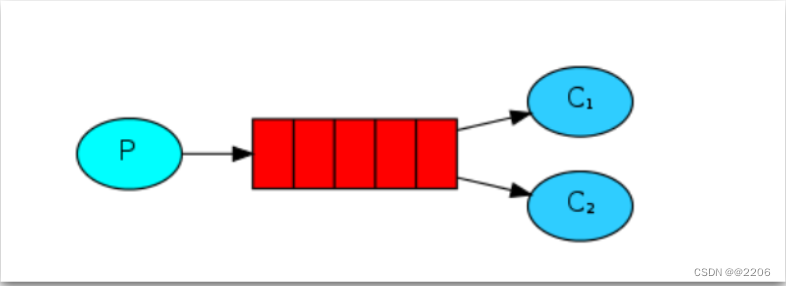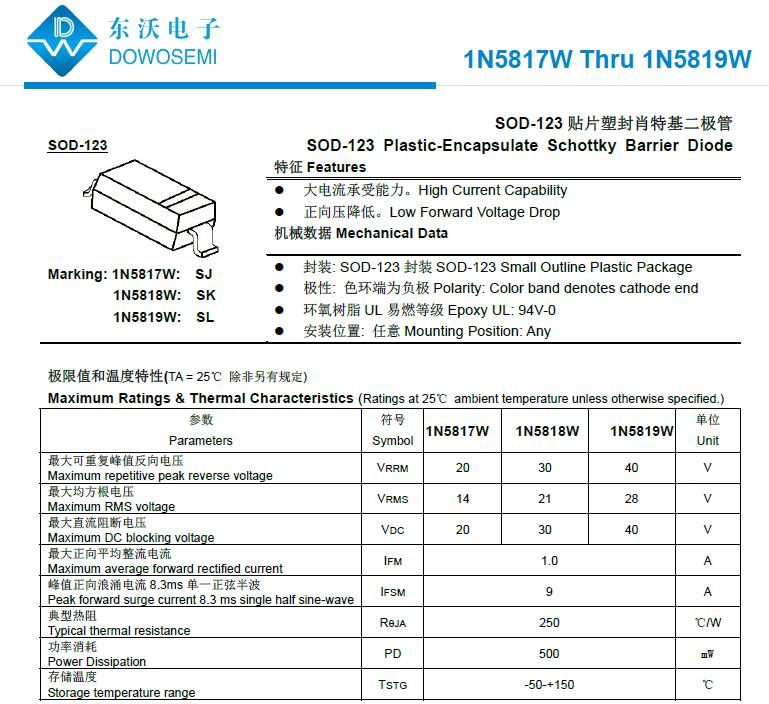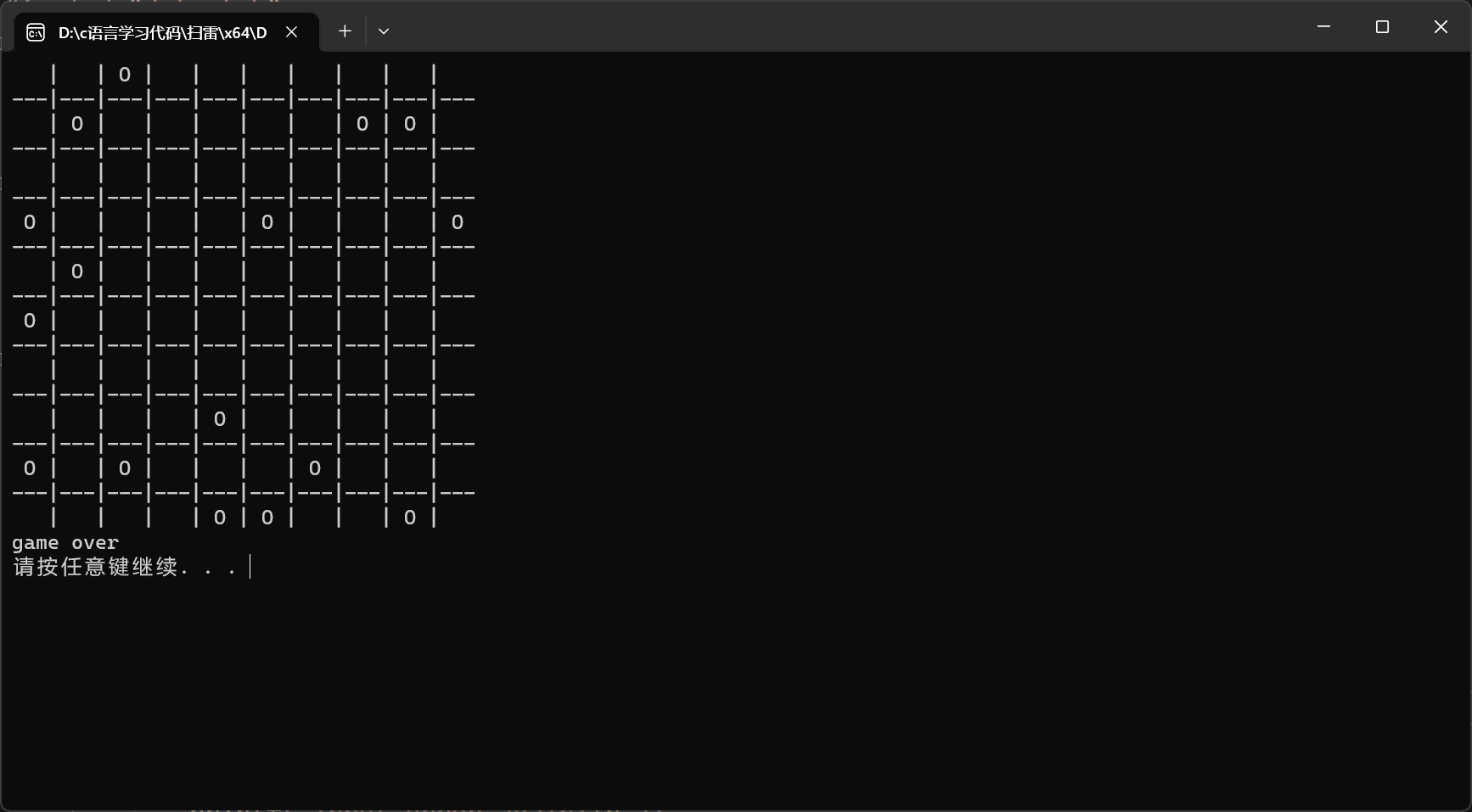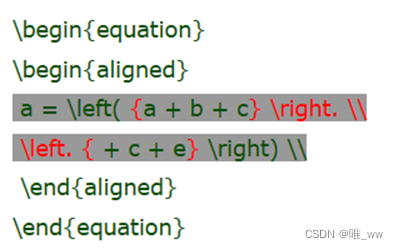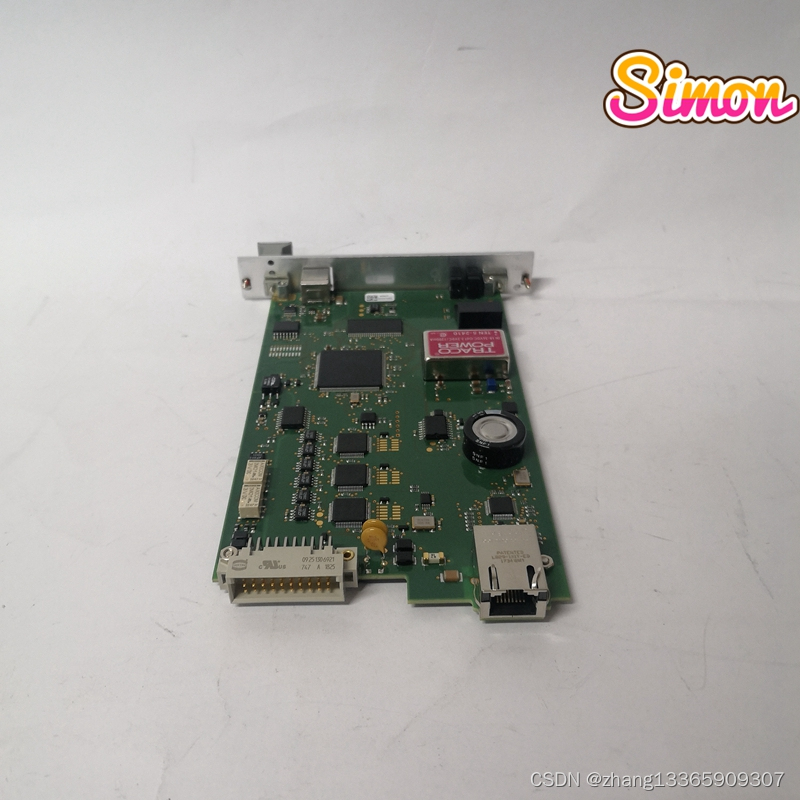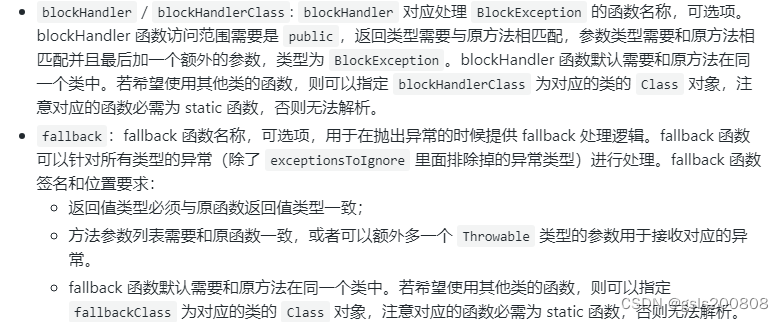首先声明一下,这是一个很深的话题,也是朋友真实遇到的,它用 DynamicMethod + ILGenerator 生成了很多动态方法,然而这动态方法中有时候经常会遇到溢出异常,寻求如何调试 动态方法体,我知道如果用 visual studio 来调试的话,我个人觉得很难,这时候只能用 windbg 了,接下来我聊一下具体调试步骤。
1. 测试代码
为了方便讲解,上一段测试代码。
class Program
{
private delegate int AddDelegate(int a, int b);
static void Main(string[] args)
{
var dynamicAdd = new DynamicMethod("Add", typeof(int), new[] { typeof(int), typeof(int) }, true);
var il = dynamicAdd.GetILGenerator();
il.Emit(OpCodes.Ldarg_0);
il.Emit(OpCodes.Ldarg_1);
il.Emit(OpCodes.Add);
il.Emit(OpCodes.Ret);
var addDelegate = (AddDelegate)dynamicAdd.CreateDelegate(typeof(AddDelegate));
Console.WriteLine(addDelegate(10, 20));
}
}这是一个动态生成的 Add(int a,int b) 方法,那如何调试它的方法体呢?这里有两个技巧。
第一:使用 Debugger.Break(); 这个语句可以通知附加到该进程的 Debugger 中断,也就是 Windbg。
第二:使用 Marshal.GetFunctionPointerForDelegate 获取 委托方法 的函数指针地址。
基于上面两点,修改代码如下:
static void Main(string[] args)
{
var dynamicAdd = new DynamicMethod("Add", typeof(int), new[] { typeof(int), typeof(int) }, true);
var il = dynamicAdd.GetILGenerator();
il.Emit(OpCodes.Ldarg_0);
il.Emit(OpCodes.Ldarg_1);
il.Emit(OpCodes.Add);
il.Emit(OpCodes.Ret);
var addDelegate = (AddDelegate)dynamicAdd.CreateDelegate(typeof(AddDelegate));
Console.WriteLine("Function Pointer: 0x{0:x16}", Marshal.GetFunctionPointerForDelegate(addDelegate).ToInt64());
Debugger.Break();
Console.WriteLine(addDelegate(10, 20));
}接下来可以用 windbg 把 exe 程序启动起来,可以看到console上的输出如下:

2. 寻找 codeheap 上的方法体字节码
接下来我们反编译下 0x00000000023d062e 这个函数指针。
0:000> !U 0x00000000023d062e
Unmanaged code
023d062e b818063d02 mov eax,23D0618h
023d0633 e9e4c934fe jmp 0071d01c
023d0638 ab stos dword ptr es:[edi]
023d0639 ab stos dword ptr es:[edi]
023d063a ab stos dword ptr es:[edi]
023d063b ab stos dword ptr es:[edi]
023d063c ab stos dword ptr es:[edi]
023d063d ab stos dword ptr es:[edi]
023d063e ab stos dword ptr es:[edi]
023d063f ab stos dword ptr es:[edi]上面的 23D0618h 才是最后真实的 动态方法 指针地址,接下来我们用 dp 看看指针上的值。
0:000> dp 23D0618h L1
023d0618 00a90050接下来我们反编译下 00a90050 地址看看方法体的汇编代码。
0:000> !U 00a90050
Normal JIT generated code
DynamicClass.Add(Int32, Int32)
Begin 00a90050, size 5
>>> 00a90050 8bc1 mov eax,ecx
00a90052 03c2 add eax,edx
00a90054 c3 ret接下来有两条路:
- 熟路模式
使用非托管命令 bp 00a90050 直接下断点调试。
- 困难模式
使用托管命令 !bpmd xxx 寻找方法描述符下断点调试。
这里我就选择 困难模式 来处理。
3. 使用 bpmd 下断点
要用 !bpmd 下断点,必须要有 方法描述符, 现在我们有了 codeaddr 如何反向找描述符呢?这里可用 !mln。
0:000> !mln 00a90050
Method instance: (BEGIN=00a90050)(MD=0071537c disassemble)[DynamicClass.Add(Int32, Int32)]上面输出的 MD=0071537c 就是方法描述符的地址,接下来就可以用 !bpmd -md 0071537c 设置断点即可。
0:000> !bpmd -md 0071537c
MethodDesc = 0071537c
Setting breakpoint: bp 00A90050 [DynamicClass.Add(Int32, Int32)]
0:000> g
Breakpoint 0 hit
eax=02505fe8 ebx=0019f5ac ecx=0000000a edx=00000014 esi=0250230c edi=0019f4fc
eip=00a90050 esp=0019f488 ebp=0019f508 iopl=0 nv up ei pl nz na pe nc
cs=0023 ss=002b ds=002b es=002b fs=0053 gs=002b efl=00000206
00a90050 8bc1 mov eax,ecx从输出看,已经成功命中断点,而且 clr 也帮我自动转接到了 bp 00A90050,接下来看下命中的断点图:
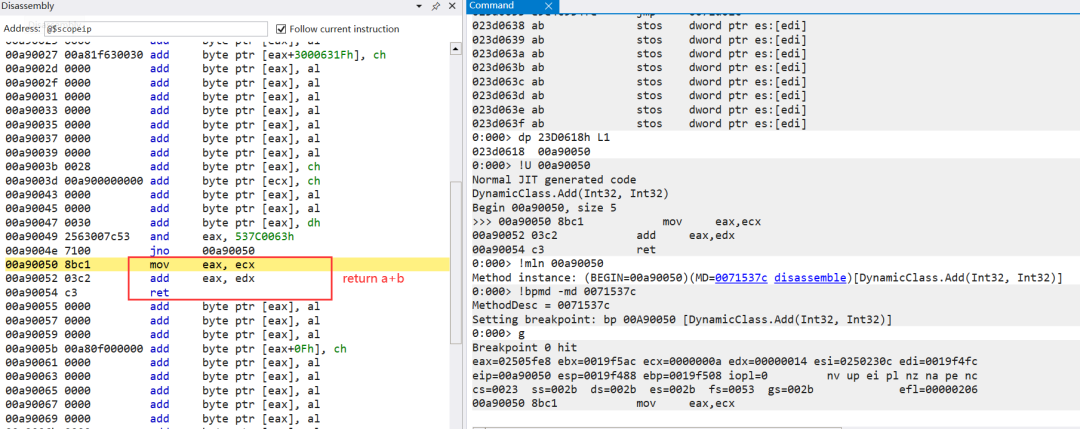
上面的二条汇编指令就是 a+b 的结果,也就是 ecx 放了 a, edx 放了 b,不信的话可以 step 二次。
0:000> t
eax=0000000a ebx=0019f5ac ecx=0000000a edx=00000014 esi=0250230c edi=0019f4fc
eip=00a90052 esp=0019f488 ebp=0019f508 iopl=0 nv up ei pl nz na pe nc
cs=0023 ss=002b ds=002b es=002b fs=0053 gs=002b efl=00000206
00a90052 03c2 add eax,edx
0:000> t
eax=0000001e ebx=0019f5ac ecx=0000000a edx=00000014 esi=0250230c edi=0019f4fc
eip=00a90054 esp=0019f488 ebp=0019f508 iopl=0 nv up ei pl nz na pe nc
cs=0023 ss=002b ds=002b es=002b fs=0053 gs=002b efl=00000206
00a90054 c3 ret这里的 ecx=0000000a edx=00000014 便是。





